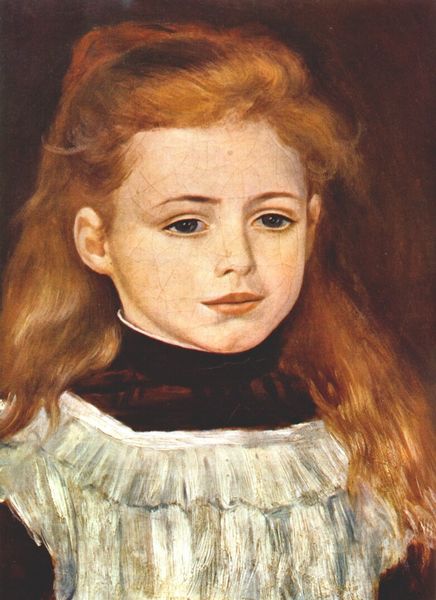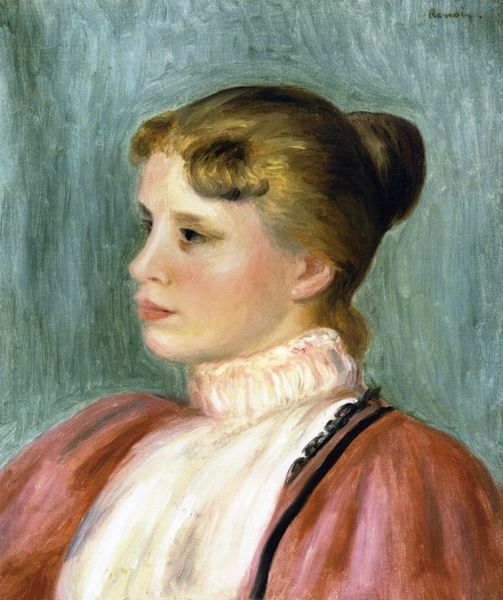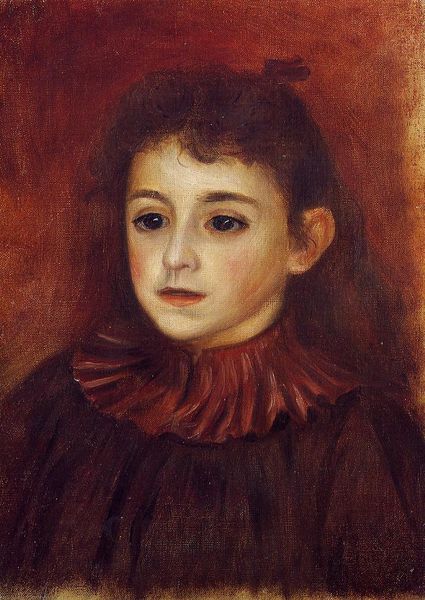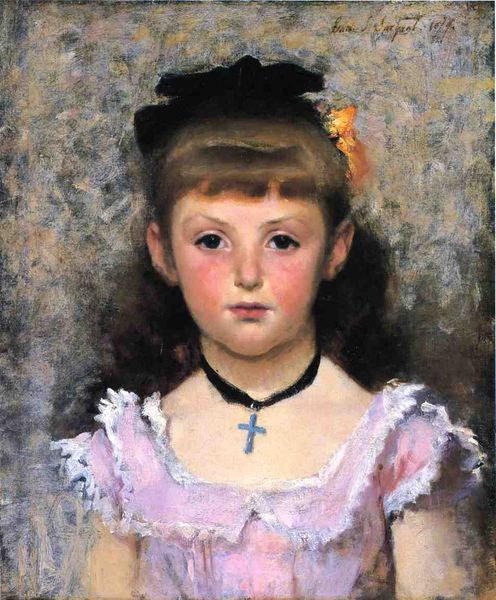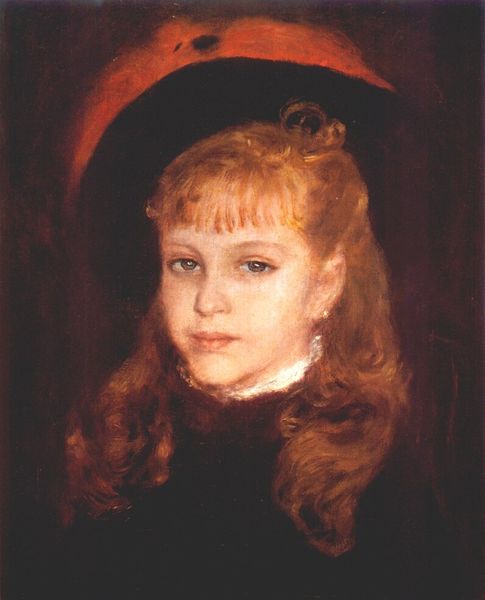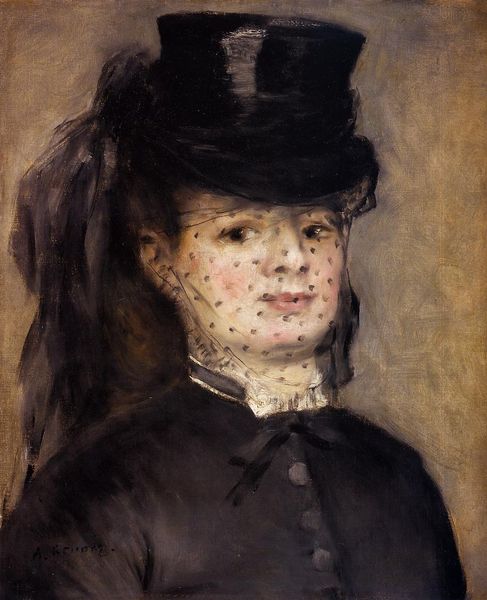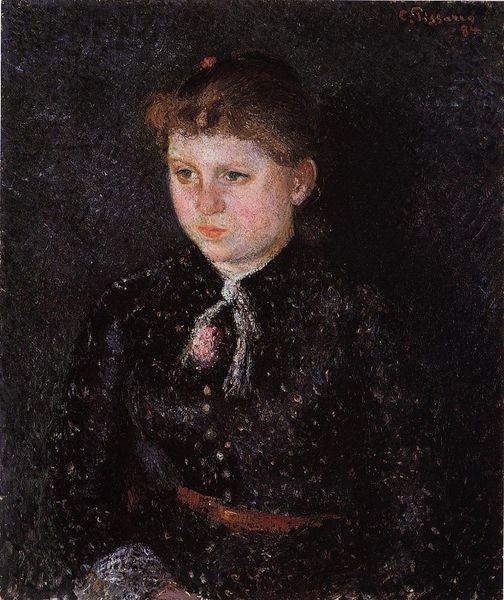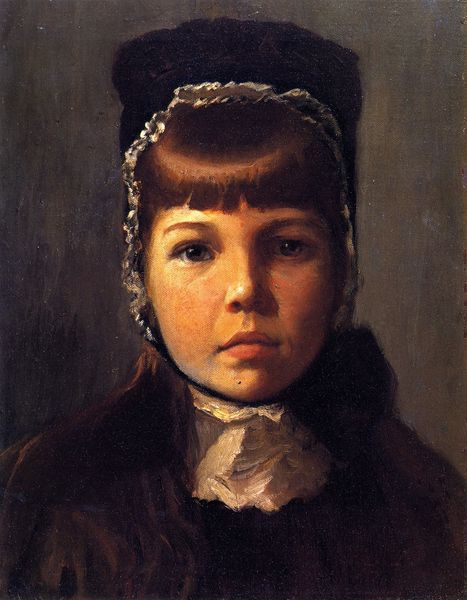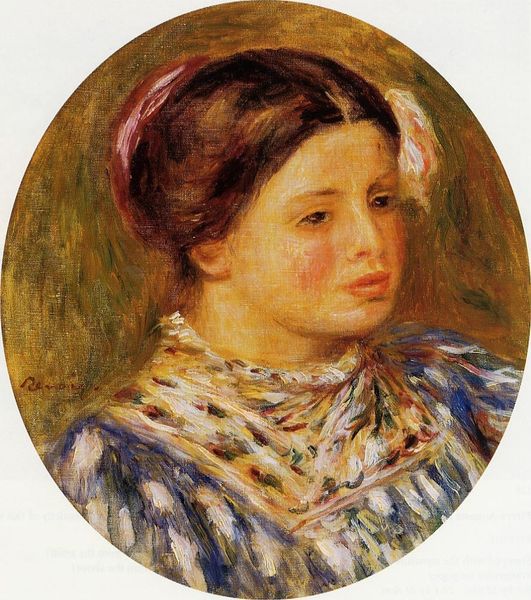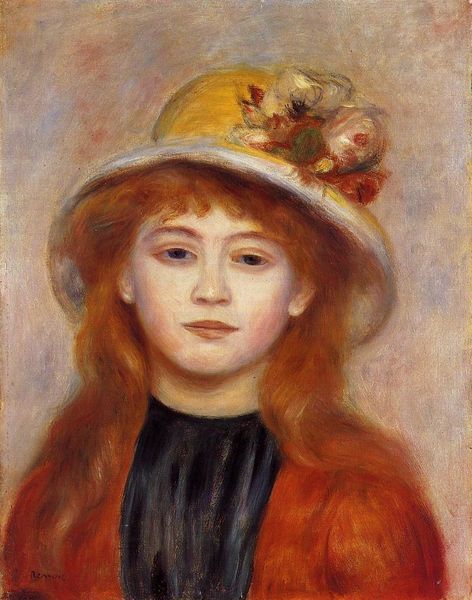
Copyright: Public domain
Editor: So, here we have Renoir's "Woman with a white jabot," painted around 1880 using oil on canvas. She looks very proper, but I’m wondering about that single flower. What can you tell me? Curator: It’s fascinating how that flower interrupts the severity, isn't it? Think of the "jabot" itself. These lace collars began as functional, but evolved into symbols of status and refinement. They visually speak to the sitter's belonging to a certain class. Editor: Right, but the flower feels so… deliberate, almost like a code. Curator: Precisely! A flower in portraiture often holds layered meaning. This isn’t just decoration. Roses are of course common emblems of love and beauty. And a white or pale pink rose frequently signals innocence and purity, perhaps alluding to virtue, especially when paired with the otherwise rather rigid elements of her clothing. What emotions does her expression convey to you? Editor: Hmm, I see your point. Her expression does have an emotional coolness to it. It seems to be playing with two registers at once – vulnerability and detachment. The lace and flower point to delicacy but also feel rather performative. Curator: That duality you pinpoint is very much at play. And if we delve deeper, flowers carry cultural memories too. The floral element might be a contemporary Victorian motif, subtly asserting feminine ideals, and reflecting them back on to this particular woman. Editor: I see. So even what seems simple, like a flower, speaks to broader social ideas… It almost encourages you to unpack what you think you know about the woman in the portrait. Curator: Indeed! It’s the quiet visual dialogue, full of symbolism, which makes the work so captivating. Editor: Thanks, that was really helpful. I didn't realize how much information was packed into what looked like just a pretty picture.
Comments
No comments
Be the first to comment and join the conversation on the ultimate creative platform.
